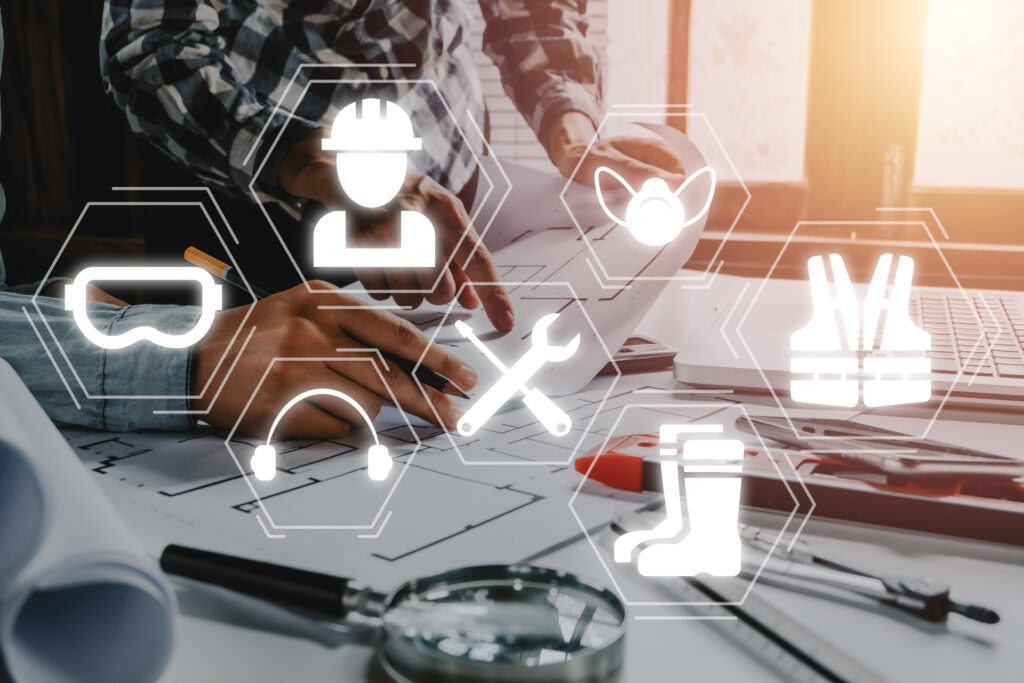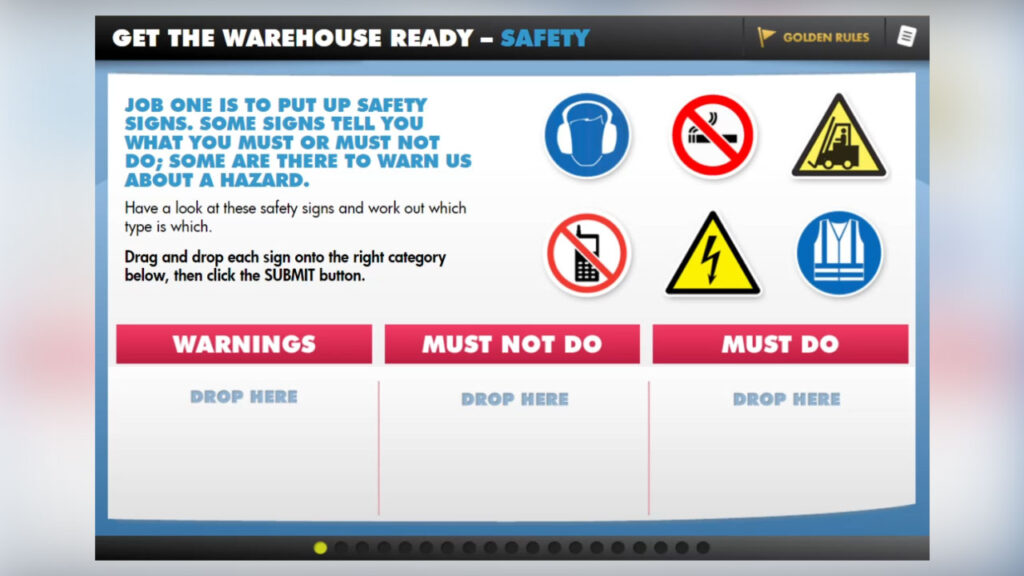In 2022, construction accounted for 25% of worker fatalities and the fatal injury rate almost doubled that of other industries. Suffice to say, more needs to be done to reduce risk in the construction industry – and virtual reality (VR) could be the tool to change the game entirely.
With traditional methods of safety training clearly offering limited effectiveness, using VR in construction safety training is a strategy that is undoubtedly making waves within the sector. Site managers and safety officers across the globe are already beginning to see the transformative benefits, and technology is only continuing to improve. See how construction training experts Simian are already making use of the technology.
In the past, hands-on experiences for workers have been difficult to access during training, with most training programs adopting a ‘learn-on-the-job’ approach. But, by utilising virtual reality technology, construction companies can finally offer a safe and immersive environment for workers to learn and practice construction site activities without risking their safety.
The benefits of VR construction safety training are numerous and have the potential to revolutionise the way construction safety is taught and executed. In this blog, we will explore 10 of the most compelling benefits of using VR in construction safety training and why it is quickly becoming a must-have tool within the construction industry.
But first…
What is VR in Construction Safety Training?
In short, VR in construction safety training refers to the use of virtual reality technology for teaching and practising construction safety procedures. Training programs involve immersing workers in virtual environments that simulate real-life scenarios typical to a construction site. During the simulation, construction workers can interact with virtual objects, perform safety procedures, and receive feedback on their actions.
This type of training provides a safe, controlled environment for workers to learn and practice without the risks associated with real-life construction work. VR construction safety training is designed to complement traditional safety training methods and can improve worker knowledge retention, increase safety awareness, and reduce the risk of accidents on the job. The use of VR in construction safety training is a growing trend and is seen as a way to improve the effectiveness and efficiency of construction safety training programs.
10 Benefits of VR in Construction Safety Training
So, what are the main benefits of using virtual reality in construction safety training? In this section, we’ll cover some of the main ways in which VR is transforming the training space, and why safety officers within the construction industry should consider updating their processes.
- Provides an immersive learning experience:
VR provides a more interactive and engaging learning experience for construction workers, even increasing their attention and retention of safety information.
- Reduces risk:
VR training eliminates the risk of injury associated with traditional training methods on a construction site, making it a safer option for workers and organisations.
- Gives a realistic simulation:
VR technology allows for the creation of realistic construction scenarios, enabling workers to experience a variety of hazardous situations and learn how to respond in the safest way possible.
- Increases engagement:
As briefly mentioned, VR training offers complete immersion which captures the attention of workers. This can increase their overall engagement with the training materials, improving their understanding and retention of the material.
- Adds accessibility:
VR training has very few limitations when it comes to accessibility. Workers can be accessed anywhere, at any time, making it easier for organisations to provide comprehensive (and consistent) safety training to all of their workers.
- Provides a cost-effective solution:
VR training eliminates the need for expensive physical equipment or travel costs, reducing the overall cost of training. For example, with VR, there is no need to access a real construction site to train with real-world scenarios, and no need for other resources like tools or manuals.
- Creates repeatable scenarios:
VR allows for repeatable training scenarios, meaning workers can practise and perfect their safety skills in a controlled environment as much as they need to – further reducing risk and keeping information retention levels high.
- Allows for greater consistency:
All workers, regardless of location, will benefit from a consistent training experience thanks to VR. This therefore reduces the risk of variation in the training received by different workers.
- Enables customisation of training:
VR can easily be customised to fit the specific needs of a construction organisation, allowing for the creation of tailored training programs depending on variables such as job level within the construction industry, or accommodations for certain individuals.
- Provides measurable results:
With VR training technology, site managers, safety officers or trainers have the ability to track and measure the performance of workers during each task. This provides valuable insights into the effectiveness of the program and the skills of individual staff members.
Real-World Examples of VR in Construction Safety Training
VR technology is, in many ways, only limited by imagination. When it comes to construction safety training, practically any procedure can be learned through the use of VR. Below, we explore some real examples of VR being used in the construction industry to improve safety training.
- The Occupational Safety and Health Administration (OSHA) developed a Fall Protection in Construction training module as part of a larger VR training program, designed to teach workers how to identify fall hazards and implement appropriate fall protection measures. Workers experience a simulated fall and learn how to use fall protection equipment in a safe and controlled environment.
- Excavation Safety is another training module used to teach workers about the dangers of excavation, such as risks of cave-ins, and how to properly use excavation equipment. Workers practise using equipment and avoiding hazards in a safe and controlled environment.
- Construction company Bechtel implemented VR simulations to train workers on crane operations, scaffolding, and other high-risk activities. By using VR, workers would practise operating cranes and scaffolding without the risk of injury or damage to equipment.
How Can VR Be Incorporated Into a Construction Safety Training Program?
Construction site managers and safety officers looking to incorporate VR into their safety training program need look no further than Sliced Bread Animation. By keeping up with industry trends across a range of sectors, we understand that time and resources can sometimes be limited when it comes to providing comprehensive, risk free training – particularly in construction where risks are high.
The modern day construction worker needs a process they can rely on, that is consistent and that helps them to retain the information they are learning day by day.
For ultimate employee engagement, reduced long-term cost and fantastic training results, VR safety training is without question the way to go for ambitious individuals in the construction industry. Contact our team today to learn how you can implement this technology.
Drawbacks and Limitations of VR in Construction Safety Training
While VR has many potential benefits for construction safety training, it is important to acknowledge its drawbacks and limitations:
- Cost: VR hardware and software can be expensive, which may be a barrier to adoption for smaller construction companies or those with limited budgets.
- Specialised equipment and space: Workers must have access to VR headsets and other equipment, as well as a dedicated space for training, which may be difficult to provide on a construction site.
- Inconsistencies with real-world construction site scenarios: VR simulations may not accurately capture the noise, heat, and other environmental factors that can affect worker safety.
- Limitations to effectiveness: While VR can be an effective tool for teaching workers about specific hazards and safety procedures, it may not be as effective for teaching broader safety concepts or for developing critical thinking skills. Additionally, some workers may not be as receptive to VR training as they would be to more traditional forms of training, such as in-person instruction or written materials.
Looking to the Future: Implementing VR in Construction Safety Training
Despite the construction industry having long recognised the importance of safety training for its workers, the need for better risk management solutions cannot be ignored. With virtual reality providing the closest possible simulations of real-world scenarios for practice and training, it is certainly a beneficial and cost-effective option for many site managers across the globe.
The future of the construction industry is set to be shaped by VR, AR (augmented reality) and other training technologies to improve operational efficiencies and drive growth. Why not stay ahead by implementing VR into your construction safety training programme?
Contact Sliced Bread Animation, experts in engaging, immersive communication solutions, to find out more about implementing VR within your construction safety training programme.










